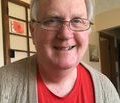In September of 2007, I started
this blog with a bit of writing advice. A little over a year later, I discovered
how little I knew about writing after hearing children’s writer, Lin Oliver
speak at a convention hosted by the Minnesota Society of Children’s Book
Writers and Illustrators. Since then, I have shared (with their permission) and
applied the writing wisdom of Lin Oliver, Jack McDevitt, Nathan Bransford, Mike
Duran, Kristine Kathryn Rusch, SL Veihl, Bruce Bethke, and Julie Czerneda.
Together they write in genres broad and deep, and have acted as agents, editors,
publishers, columnists, and teachers. Since then, I figured I’ve got enough
publications now that I can share some of the things I did “right” and I’m busy
sharing that with you.
While I don’t write full-time,
nor do I make enough money with my writing to live off of it...neither do all
of the professional writers above...someone pays for and publishes ten percent
of what I write. When I started this blog, that was NOT true, so I may have
reached a point where my own advice is reasonably good. We shall see! Hemingway’s
quote above will now remain unchanged as I work to increase my writing output
and sales. Faulkner once wrote, “The best fiction is far more true than any
journalism.” And Tea Obreht thought that “The best fiction stays with you and
changes you.” These are my goals…
This story has a very long genesis, but I’m going to start with fragmentary
notes to let you see how I got there:
1) A Friday Challenge contest issued on March 5, 2010 called, “Strange Bot
in a Strange Land” (http://thefridaychallenge.blogspot.com/2010/03/friday-challenge-3510.html)
2) A different Friday Challenge issued on March 4, 2011: “Seriously:
About The Post-Petroleum Future”; The Friday Challenge (https://thefridaychallenge.blogspot.com/search?q=post-petroleum)
The first one led to a short story called “Oath” (if you want to read it,
go to the sidebar and click on the link. It’s still there!)
The second one led to the invention of CHEAPALIN, which is “a
living, post-petroleum genetic amalgam called CHEAPALIN, a patchwork of the DNA
of nine organisms. “…the road organism – a bioengineered DNA patchwork of Cellulose producing, Heme,
Eel, Ameba, Peat moss, Alfalfa, Leukocytes, Iron
incorporated in a molecule and a mix of Notothenioidei and Noctilucan cells...acronym CHEAPALIN...[m]odified
electric eel cells created current passing through hair-fine iron filaments deposited
in the road. A thick black peat pad of iron-rich heme attached to the underside
of any car...charged a set of batteries. A magnetic field generated as cars
moved over the filaments got read by a microchip implanted in the car’s pad,
matching the road’s magnetic field creating a maglev effect. A variety of
chlorophyll and alfalfa genes allowed roots growing under the road organism to
return nitrogen to the soil, pull up micronutrients and conduct photosynthesis.
A semi-transparent, thick cellulose skin protected the whole thing while
remaining flexible. A few Notothenioidei
genes kept cellular fluids from freezing during Minnesota
With those pieces, I started
playing around with a future dominated by governments encouraging the drift of
Humans from rural areas into the cities – called urbanization. Over the last
half millennium, people moving from the country into urban centers has
accelerated dramatically: https://en.wikipedia.org/wiki/Urbanization#/media/File:Urbanization_over_the_past_500_years_(Historical_sources_and_UN_(1500_to_2016)),_OWID.svg
There is no indication that this will slow down as the UN projects that “…half
of the world's population will live in urban areas at the end of 2008. It is
predicted that by 2050 about 64% of the developing world and 86% of the
developed world will be urbanized. That is equivalent to approximately 3
billion urbanites by 2050, much of which will occur in Africa and Asia.
Notably, the United Nations has also recently projected that nearly all global
population growth from 2017 to 2030 will be by cities, with about 1.1 billion
new urbanites over the next 10 years.”
In my future, the UN, backed by the US, China, Brazil, Mexico, India,
Indonesia, Saudi Arabia, Australia, and Japan legislates the Back To the Wild
Initiatives that would redirect resources from rural areas to urban areas and
the eventual creation of 20,000 Vertical Villages, each one with a population
of approximately 4,6oo,ooo. The remaining 40,000 Humans work in and around the
VVs, farming and doing animal husbandry.
Also, artificial intelligent robots serve as both public safety and service
providers, they serve in the armed forces, which had been reduced to the
Combined Forces comprised of both military and police Humans, deeply trained,
requiring a four year training degree that includes social work, counseling, as
well as self-defense, weapons choice, weapons training and development (as test
subjects), physical fitness, and world religions, etc.
This story takes place on the cusp of the total application of the BTWI.
There are still cities and towns. Javier Quinn Xiong Zaman, a veterinarian and
genetic engineer, works near the Minneapolis St Paul Vertical Village.
Kidnapped one night, he ends up in the Northwest Angle, the guest of one Sergeant
Thatcher, created by the Canadian government and rejected by the Canadian
government and declared illegal. She fled to the US where she was covertly
inducted into the Marines, then transferred to the US contingent of the
Combined Forces.
She and Dr. Scrabble (because of his initials: J, Qu, X, and Z) have to
figure out what happened to a piece of CHEAPALIN test road. It seems to have
made a break for the Canadian border. If it crosses into Canada, it will be in
violation of several anti-genetic modification treaties (the same ones that
would have terminated Sergeant Thatcher) and might spark an armed conflict (the
last time the US tangled with Canada, Washington, DC was pretty much burned to
the ground).
Thatcher and Scrabble somehow turned out to be humorous, and while
several reviewers thought CHEAPALIN was absurd, they mostly enjoyed the
interaction between Thatcher and Scrabble.
Actually, I enjoyed the interaction. Somehow, the two of them had become “star-crossed
lovers” (without the “lover” part). Of course, the pair of them sprang from my
own reading and favorite characters. After they came to life on the page, I
realized that they had character traits I’d read in Lois McMaster Bujold’s
novella, “Labyrinth” (look it up if you’re interested – you won’t be
disappointed!) of the main character, Miles Vorkosigan, and a genetic construct
he unintentionally rescues, whose name is Nine…which he changes to Taura when
he recruits her for his little band of mercenaries…
Anyway, it turns out I liked Thatcher and Dr. Scrabble a lot…so they came
alive on the page, and despite the weirdness of the problem they faced, they
overcame that and ended up published.
I tried a second story, but when Thatcher left the stage and stayed away
(it WAS in fact, because she had no idea where a relationship with Scrabble
would go; but I failed to communicate that), the story failed to carry through
and was rejected. I’ve started a third, which will be in between “Road
Veterinarian” and “Dinosaur Veterinarian”; the working title is “Deer Veterinarium”,
so we’ll see where that ends up!
The main thing that went right? While working to make characters seem
like real people…I succeded.






